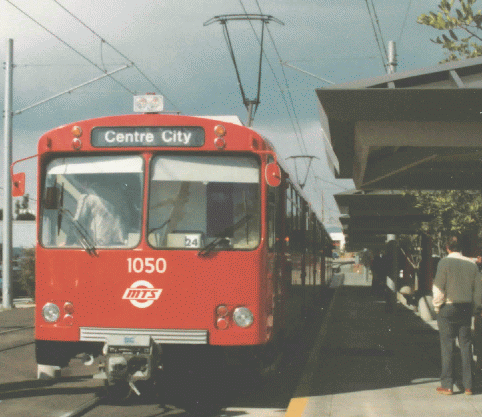
Light Rail Progress can be contacted at: Light Rail Progress |
Data from the American Public Transportation Association (APTA)
indicated that the LRT ridership increased at a rate almost as fast
as motor bus ridership decreased (3.0%). As the data in the
graph below illustrates, grade-separated rapid rail ("heavy rail")
increased slightly, by 0.6%, although regional ("commuter") rail
declined slightly, by 1.7%. Trolleybus ridership led in second
place, after LRT, with a growth rate of 1.8% (for a little over one-third the total ridership of LRT).
These rates are for all major fixed-route services – the mainstay of urban public transport. it should be noted, however, that "unconventional", special-purpose services also showed impressive growth rates. Demand-response transit (typically, using small minibus or van-sized vehicles) grew by 5.0%, while all "Other" services – including ferries, aerial tramways, automated guideway transit, monorail, cable car, and vanpool operations – grew at a hefty 5.5%. This suggests considerable market potential for many of these types of services. At the same time, however, that potential may exist within only a small "universe" of possible riders, if one judges by total ridership. Taken altogether, the Demand Response and Other categories, on the whole, accounted for only about two-thirds as many rider-trips as LRT, and only about 2.3% of all US public transit ridership. Updated 2003/04/11 |
|
|
|